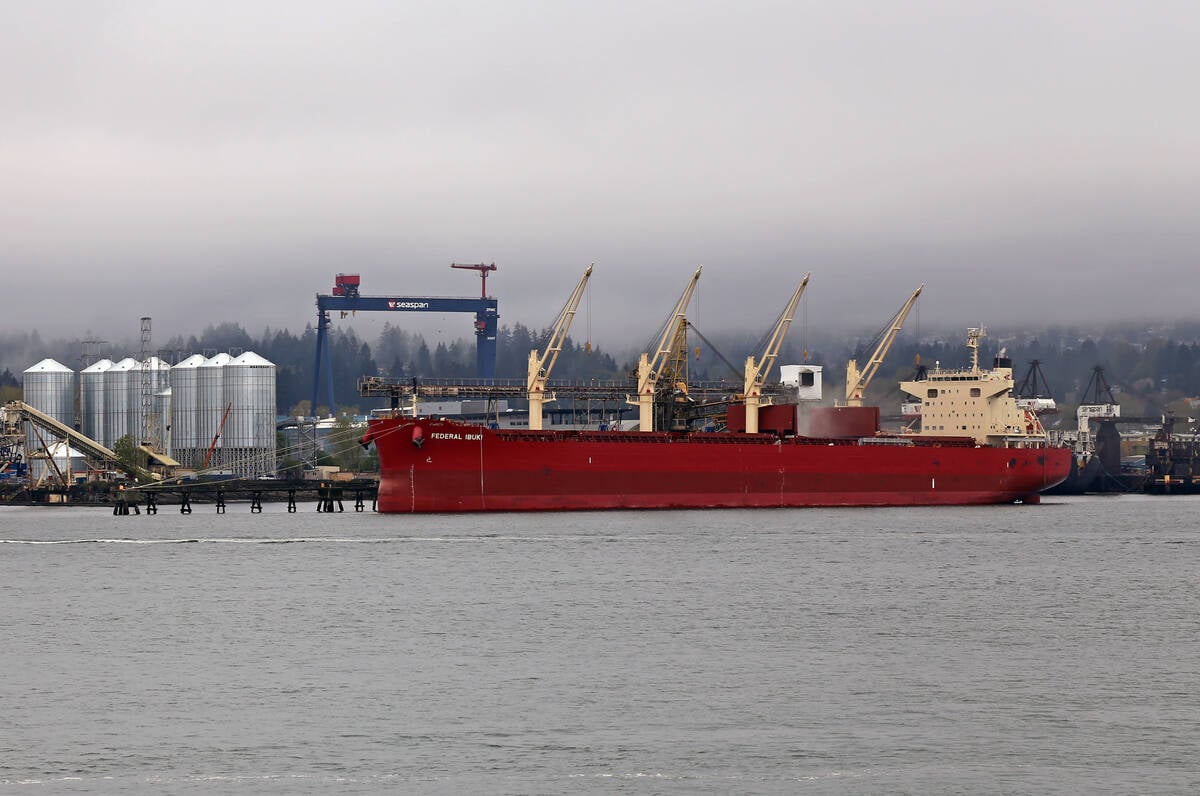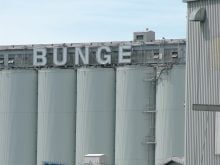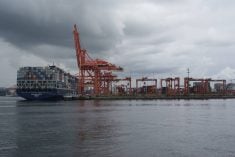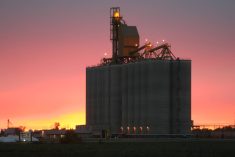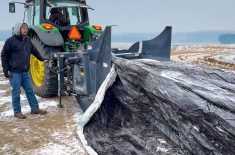SASKATOON — The Port of Vancouver moved a record volume of goods during the first six months of 2025, including “vast quantities” of agricultural commodities.
Movement of all commodities were up 13 per cent over the same time last year with more than 85 million tonnes of cargo handled.
That included strong exports of crops and crop products.
Read Also
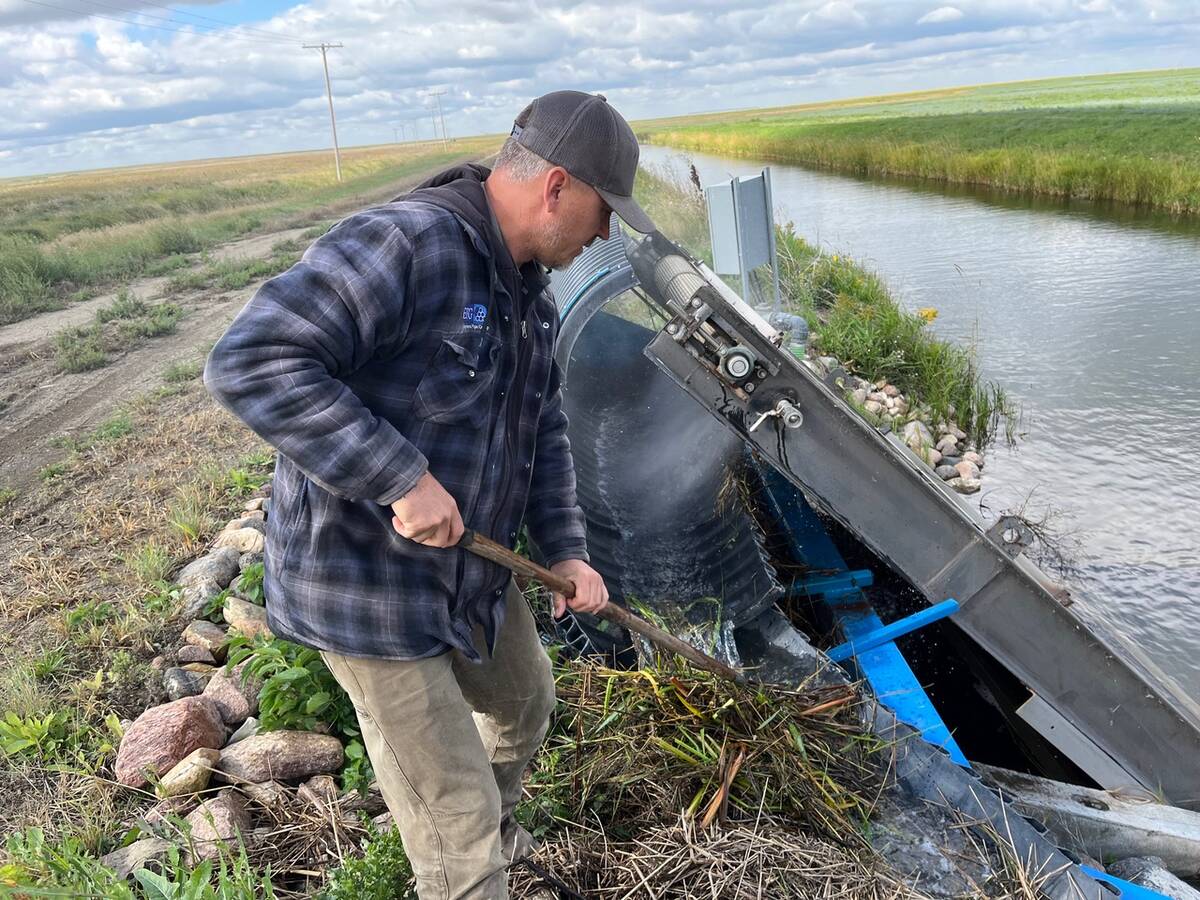
Saskatchewan farmer uses tile drainage to manage water
The integration of both irrigation and tile drainage results in higher yields, water efficiency, improved soils and less nutrient runoff, says one producer.
Canola oil shipments were up 72 per cent to 700,000 tonnes.
“The port connected Canadian producers with new overseas markets and helped offset lower U.S. and Chinese demand,” the port stated in a press release.
Canola oil was shipped to 12 markets in the first half of 2025, compared to only four the previous year. New and returning markets included Belgium, Malaysa and Mexico.
Bulk grain shipments were up eight percent to 15.3 million tonnes, reaching the second highest half-year volumes on record behind 2021. Wheat shipments were up 16 per cent and canola seed exports were 12 per cent higher.
“Increased volumes of canola seed went to Japan, while (other) markets such as Mexico, Netherlands, France, Bangladesh and Bulgaria helped offset the impact of Chinese tariffs,” stated the port.
A further 1.8 million tonnes of grain moved by container.
Shri Madiwal, vice-president of operations and supply chain with the port, credited the strong grain export program to decent supplies from the 2024-25 crop and a push to diversify into markets beyond the United States and China.
However, he also credited it to a port optimization project called the Active Vessel Traffic Management (AVTM) program.
AVTM was implemented to help the port deal with vessel congestion, anchorage problems and the increased traffic created by the Trans Mountain pipeline expansion.
Trans Mountain ships go through the Second Narrows, which means the rail bridge must be raised, and that bridge is critical for servicing the North Shore Trade Corridor, which handles about 50 per cent of the port’s grain exports.
The bridge has become a “pinch point” for the gateway, and shippers of grain, coal and fertilizer were concerned it was going to get far worse with the 700 per cent increase in Trans Mountain ships.
However, the AVTM program, which is a centralized scheduling system, successfully debottlenecked the problem.
“Everything is working quite well,” said Madiwal.
“We are extremely proud of the work we’ve done on that port optimization initiative.”
Canadian National Railway mentioned in its 2025-26 Grain Plan that the new scheduling system allows the railway to better anticipate when the bridge will be lifted for vessels and to adjust train movements accordingly.
“Since AVTM was implemented, we have increased the average weekly train count moving to/from North Vancouver by 10 per cent,” stated the railway.
Madiwal said that is high praise.
“That’s powerful. A 10 per cent increase in capacity is unheard of,” he said.
The port is working on more than $1 billion in infrastructure improvements, such as the Holdom Overpass project in Burnaby.
The four-lane overpass will eliminate any interaction between road transportation and rail.
“That’s a huge efficiency gain for the North Shore Trade Corridor, where we have a few grain terminals like Richardson and G3,” said Madiwal.
However, the biggest difference-maker might be the project that will allow terminals to load grain during rain events, which happen an average of 59 days a year in Vancouver.
Current labour rules prevent longshoremen from working during inclement weather without first taking time-consuming safety precautions.
The upshot is that many terminals simply don’t load during rainy weather.
The port has been working with Transport Canada’s National Supply Chain Office and the port’s nine grain terminals to implement new engineering controls that allow for safe loading in the rain.
“That is really going to be a game changer for Pacific Northwest ports, especially the Port of Vancouver, where we have the highest concentration of grain terminals,” said Madiwal.
Trials and pilot projects have been completed, and a couple of grain terminals will be rolling out the new system for loading grain in the rain during the 2025-26 marketing campaign.
“Once it is widely adopted, I think that’s going to be the biggest increase in the efficiency of our grain terminals,” he said.
The port is also nearing a final investment decision on Roberts Bank Terminal 2 (RBT2), a proposed new container terminal that will unlock an additional $100 billion a year in West Coast trade capacity.
Madiwal said the amount of grain moving by container has increased sharply over the past decade to 10 per cent of the total volume, up from three or four percent.
He expects that volume to keep climbing as smaller countries that can only handle containers replace some of the lost sales to China, which is a big importer of bulk cargo.
RBT2 will be Vancouver’s fifth container terminal and will increase the port’s total container capacity by 50 per cent. It is expected to be operational in the mid-2030s.
The port recently announced that it has begun the process of selecting the construction company that will build the land mass on top of which the RBT2 terminal will be built.
There are also other infrastructure projects at the port that should help boost the movement of grain and grain products.
DP World in Canada recently opened a new transloading facility at Fraser Surrey that allows it to export up to one million tonnes of canola oil per year.
Upgrades to Richardson’s bulk grain terminal railyard increased annual capacity at the terminal to seven million tonnes from six million tonnes.
Cascadia’s bulk grain terminal expanded its railyard to allow for assembly of 2,600-metre-long trains onsite.
Madiwal thinks today’s geopolitical issues will push more product through Canada’s sea ports as the country attempts to diversify away from its over-dependence on the U.S. market.
He believes the Port of Vancouver has a good chance of attracting some of that increased traffic because it services countries in the Indo-Pacific region where more than half of the world’s population resides.




